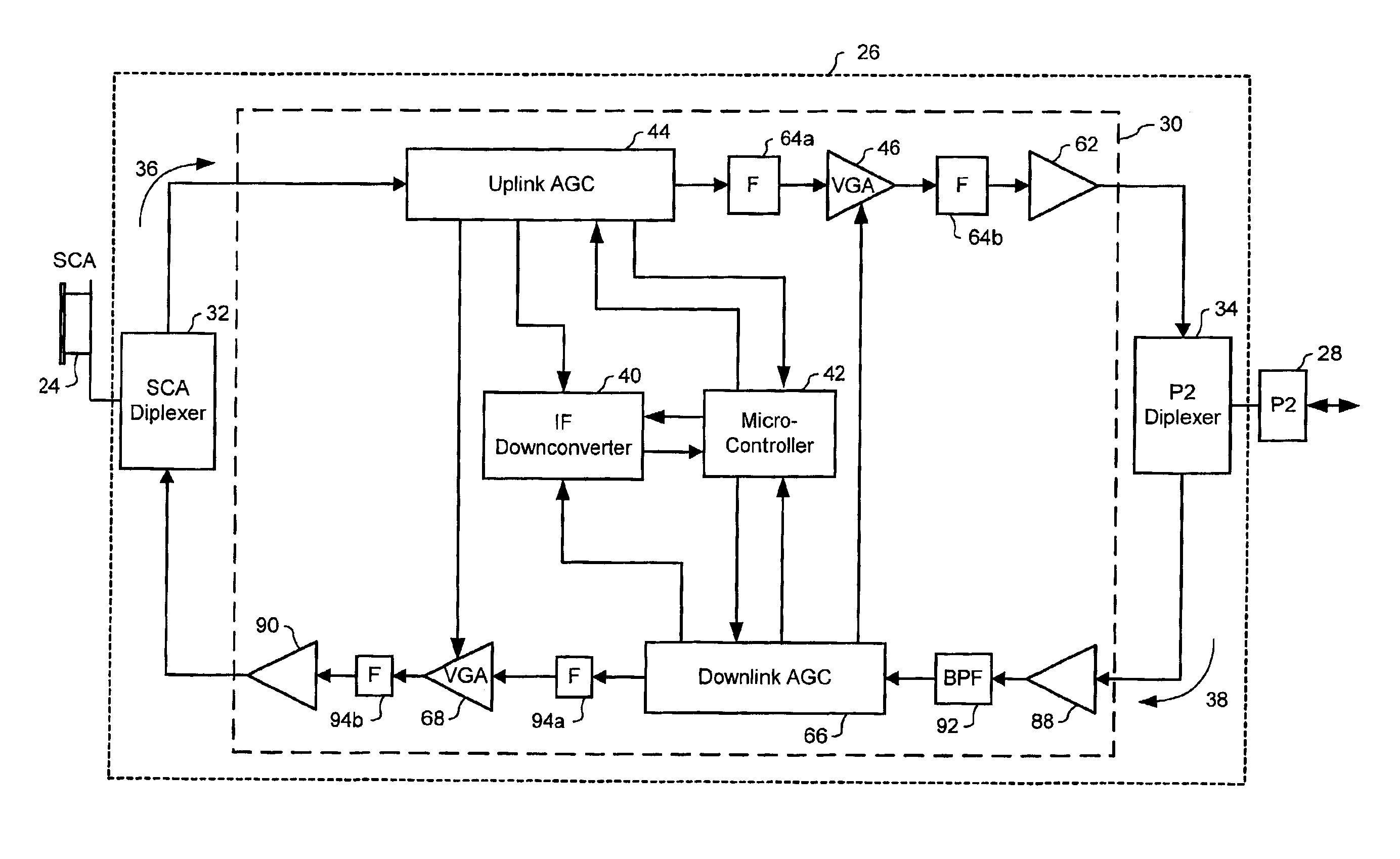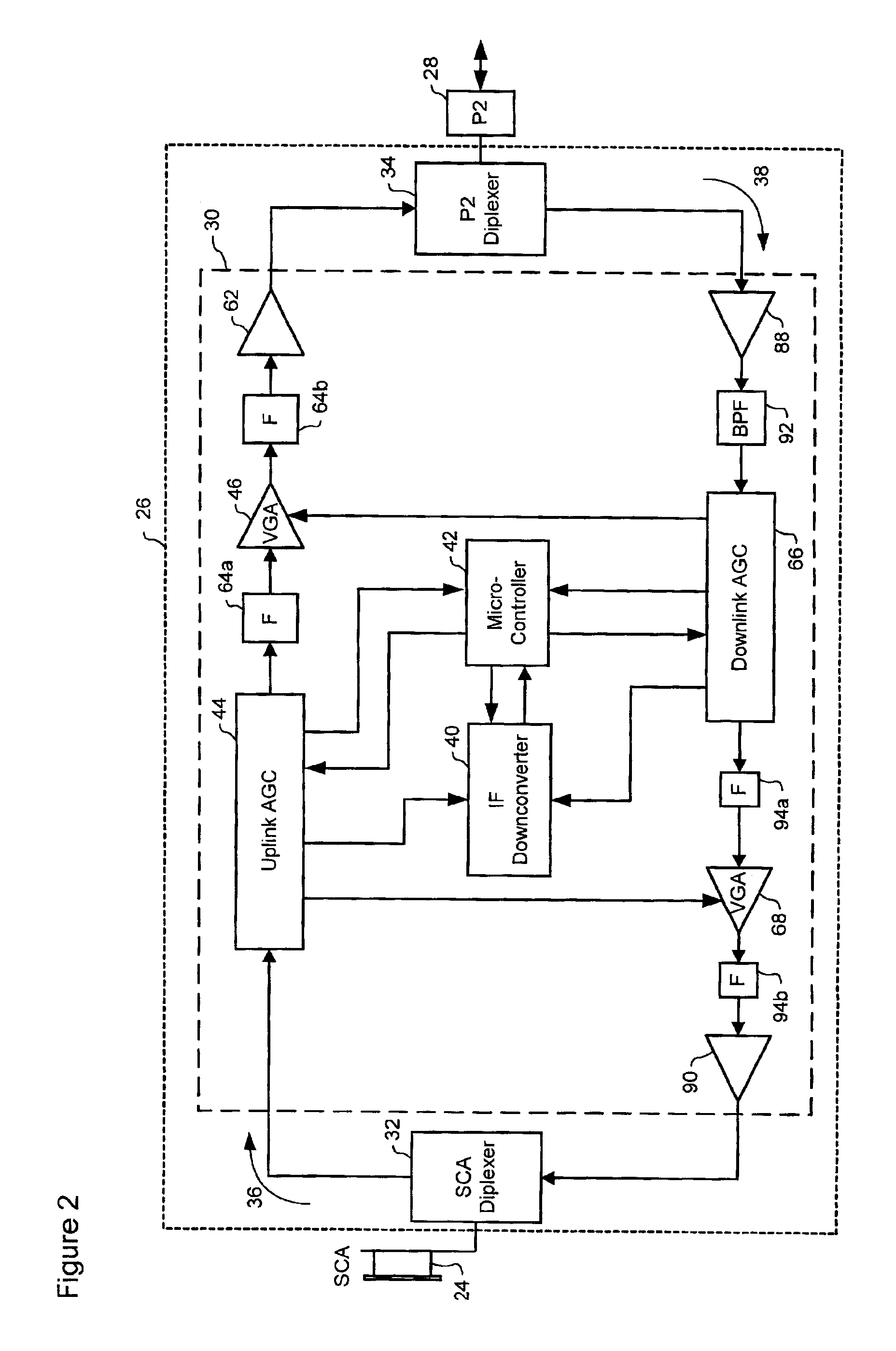Intelligent gain control in an on-frequency repeater
a repeater and intelligent technology, applied in the field of wireless access networks, can solve the problems of unreliable or non-existent service of individual wireless subscribers, unreliable coverage area of wireless networks, and individual subscribers cannot benefit from the improved services of repeaters
- Summary
- Abstract
- Description
- Claims
- Application Information
AI Technical Summary
Benefits of technology
Problems solved by technology
Method used
Image
Examples
Embodiment Construction
[0032]The following description utilizes exemplary power levels, power ranges, channel frequencies and band-widths in order to illustrate various features of the present invention. Those skilled in the art will appreciate, however, that the present invention is by no means limited to such values. On the contrary, those skilled in the art will readily understand that the present invention can be deployed for use in conjunction with any wireless communications network, and it is to be expected that the power levels, power ranges, channel frequencies, and band-widths stated herein will be modified to conform to the requirements of the communications network in question. Such modifications are considered to be well within the purview of those of ordinary skill in the art, and lie within the intended scope of the appended claims.
[0033]The present invention provides an Intelligent Gain Controller (IGC) for use in an on-frequency repeater, such as, for example, an Adaptive Personal Repeate...
PUM
 Login to View More
Login to View More Abstract
Description
Claims
Application Information
 Login to View More
Login to View More - R&D
- Intellectual Property
- Life Sciences
- Materials
- Tech Scout
- Unparalleled Data Quality
- Higher Quality Content
- 60% Fewer Hallucinations
Browse by: Latest US Patents, China's latest patents, Technical Efficacy Thesaurus, Application Domain, Technology Topic, Popular Technical Reports.
© 2025 PatSnap. All rights reserved.Legal|Privacy policy|Modern Slavery Act Transparency Statement|Sitemap|About US| Contact US: help@patsnap.com



